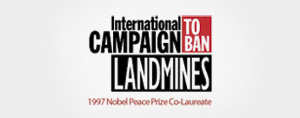13 September 2006
Press Release
PROGRESS IN MINE ACTION MAY BE JEOPARDIZED BY DECREASING FUNDING according to Landmine Monitor Report 2006, released today
GENEVA, Switzerland - 13 September 2006- More land was demined in 2005 than ever before, but global funding for mine action decreased for the first time, raising concerns about future progress in eradicating mines and efforts to meet the needs of the increasing number of survivors, according to Landmine Monitor Report 2006: Toward a Mine-Free World. The International Campaign to Ban Landmines (ICBL) releases the 1,230-page report at the United Nations today.
Landmine Monitor reports on the global landmine situation and scrutinizes the implementation of and compliance with the 1997 Mine Ban Treaty. Landmine Monitor Report 2006 is the eighth annual edition of the report.
Mine action programs in 2005 demined more than 740km2 of land, an area equal to the size of New York City, and more than in any other year since the start of modern demining in the late 1980s. This included active clearance of a total of almost 145km2 of mined areas and 190km2 of battlefields. More than 470,000 landmines, including around 450,000 antipersonnel mines, and more than 3.75 million explosive devices were removed and destroyed.
“Record demining was reported in 2005,” said Mr. Stuart Maslen of Norwegian People’s Aid, Landmine Monitor’s Mine Action Editor. “But landmines remain in over 78 countries and seven territories. Global mine action funding will need to be sustained if states are to complete mine clearance in time.”
Guatemala and Suriname completed clearance of all mined areas in 2005. Twenty-nine countries still have to meet deadlines set down by the Mine Ban Treaty to clear all antipersonnel mines on their territory by 2009 or 2010. Thirteen are not on track to meet this target, including Bosnia and Herzegovina, Cambodia, Mozambique, and Thailand.
“Countries who joined the treaty committed themselves to finish demining in 10 years,” said Ms. Jody Williams, ICBL Ambassador. Ms. Williams shared the 1997 Nobel Peace Prize with the ICBL. “The longer states take to clear these mines, the longer these mines wait in the ground for innocent civilians to step on.”
Three governments used antipersonnel mines in 2005 and 2006 – Burma/ Myanmar, Nepal and Russia. Non-state armed groups in at least 10 countries used antipersonnel mines or antipersonnel mine-like improvised explosive devices.
For the first time, Landmine Monitor recorded mine risk education (MRE) activities in China, while new projects and activities were recorded in 28 countries. Despite these efforts, reported casualties – which are often less than half of the real number – totaled 7,328 in 2005, an increase of 11 percent from 2004. Over 80% of new casualties were civilians. The increase was largely due to intensified conflict in countries including Burma/Myanmar, India, Nepal and Pakistan, with Colombia having the highest number of recorded casualties – 1,110.
The number of mine survivors increases each year, and these survivors often have life-long needs. Up to 500,000 people alive today have survived a landmine explosion. Millions more continue to live in mine-affected areas.
Significant achievements have not yet been made in providing assistance to survivors. Funding for survivor assistance remains insufficient and programs are inadequate in all but 10 of the 58 countries which recorded new mine casualties in 2005.
“In addition to overcoming physical and psychological trauma, many survivors also struggle to achieve social acceptance, gain meaningful employment and ensure their rights as disabled people are respected,” said Ms. Katleen Maes of Handicap International, Landmine Monitor’s Victim Assistance Editor.
The European Commission, United States and eight other major donors decreased their support for mine action in 2005. Mine action includes mine clearance, mine risk education, stockpile destruction, survivor assistance and promotion of the mine ban. In 2005, global mine action funding totaled $376 million, $23 million less than the previous year. Drastic reductions in mine action funding occurred in Iraq (down $30.9 million, 53%), Afghanistan ($25 million, 27%) and Cambodia ($17.7 million, 43%).
Brunei, the Cook Islands, Haiti and Ukraine joined the Mine Ban Treaty in this reporting period. Currently there are 151 States Parties to the treaty. Three countries have signed but not ratified. Forty countries remain outside it, including China, Russia and the United States. The treaty comprehensively prohibits use, production, and trade of antipersonnel landmines. It requires clearance of mined areas within 10 years and the destruction of stockpiled antipersonnel mines within four years.
Landmine Monitor Report 2006 contains information on landmine use, production, trade, stockpiling, demining, casualties and survivor assistance in 126 countries and areas.
Landmine Monitor is coordinated by an Editorial Board drawn from four organizations: Mines Action Canada (the lead agency), Handicap International, Human Rights Watch and Norwegian People’s Aid. A total of 71 Landmine Monitor researchers in 62 countries contributed to the report. It constitutes a unique, sustainable, systematic way for nongovernmental organizations to monitor and report on the implementation of an international humanitarian law and disarmament treaty.
Landmine Monitor Report 2006 and related documents are available online in various languages. From 09:00 GMT on 13 September the report will be available online atwww.icbl.org/lm/2006.For more information or to schedule an interview contact:
- Ms. Jackie Hansen, Landmine Monitor Project Manager, Geneva (GMT+1), Mobile +41-76-220-8687 or +1-613-851-5436, email lm@icbl.org
- Ms. Simona Beltrami, ICBL Advocacy Director, Geneva (GMT+1), Mobile+39-33-3714-2251, email simona@icbl.org



